How to diagnose, treat and prevent malaria
Malaria is a disease caused by mosquitoes carrying malaria parasites. If left untreated, patients with malaria may experience serious and even fatal complications. Although there is no vaccine against malaria recently , the treatment of this disease is often very successful. Successful treatment depends on the ability to identify risk factors, symptoms and receive treatment as soon as possible.
Part 1: Diagnosis of malaria
1. Determine the risk of malaria

In fact, some groups are at higher risk of malaria, but often anyone can get it. You should be aware of risk factors to determine if you have this disease. In rare cases, malaria can be transmitted through blood transfusions or organ transplants if medical personnel make mistakes in screening donors. Sharing needles can also spread malaria. However, malaria is most commonly spread by mosquito bites, so most people with malaria often live in areas with tropical and subtropical climates.
- The US Centers for Disease Control and Prevention CDC has issued a specific list of malaria risk by country. Countries with a high risk of malaria include Angola, Cameroon, Chad, Côte d'Ivoire and Liberia, among others. The most dangerous malaria strain is identified in Africa and southern Sahara.
- Note that the risk of malaria is not only for people living in these areas but also for tourists.
2. Identify symptoms

Recognize the symptoms of this disease, if you are living in a country at high risk of malaria. Common malaria is incubated 7 to 30 days before the onset of symptoms. But if you are a tourist from a low-risk country, you may need to take anti-malaria medication before traveling. If you have malaria even after taking the medicine, it will help slow the development of the disease. It may take several months for symptoms to appear. For safety, you should be alert for 1 year after arriving at an area with high risk of malaria. Ask your doctor to regularly check the symptoms of malaria within 1 year after traveling.
3. Learn about different types of malaria
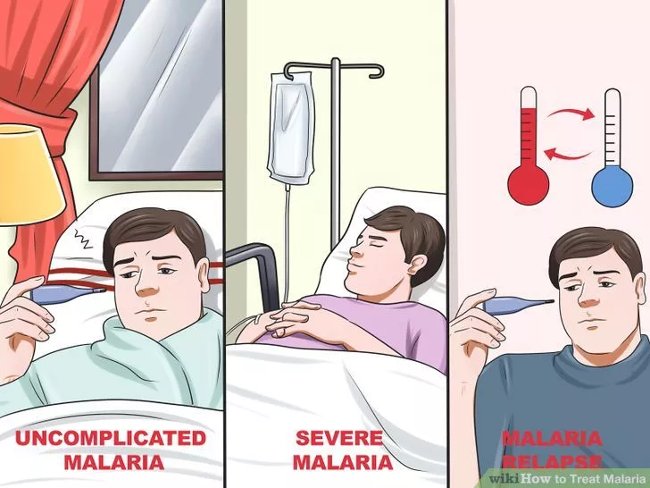
Malaria usually occurs in one of three forms: uncomplicated malaria , severe malaria and recurrent malaria . Uncomplicated malaria is the most common type, but patients often go to the hospital for a check-up because it is often mistaken for a common cold, flu or infectious disease. Residents living in high risk areas often recognize the symptoms of uncomplicated malaria and treat it themselves. On the other hand, severe malaria can weaken internal organs and can even be fatal. Severe malaria requires immediate medical attention. Recurrent malaria after the first time of malaria is often not easily recognized because the disease often does not have outstanding symptoms.
4. Identify uncomplicated malaria symptoms
Uncomplicated malaria can occur in episodes and usually lasts 6 to 10 hours. In each episode, the patient will experience a cold period, a hot period and then a period of perspiration.
- During the cold phase, patients will feel cold and full body trembling.
- During the hot period, the patient will have fever, headache and vomiting.Young children may also have seizures.
- During the period of sweating, the patient will feel tired and sweaty while the body is at normal temperature.
- Other symptoms include mild yellow skin and shortness of breath.
5. Be careful with severe malaria symptoms
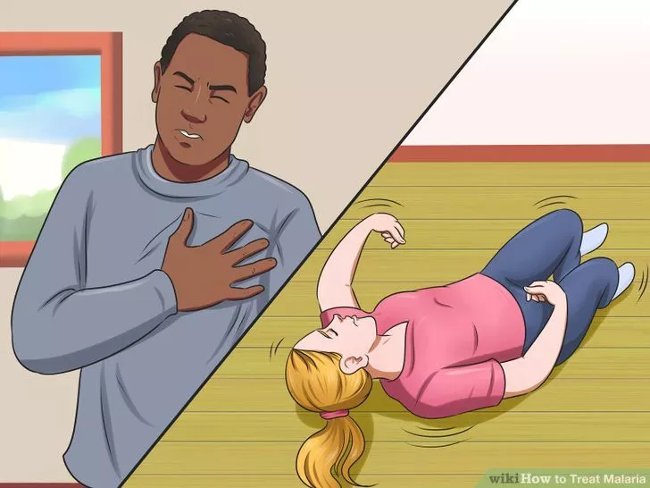
Many patients will have non-specific symptoms such as fatigue, headache, nausea, vomiting or body aches. If the disease progresses to the stage of affecting organs, blood or metabolic function, the symptoms of the disease will become more intense. Severe malaria can cause death and require immediate medical attention. Contact your doctor immediately or call an emergency immediately if the following symptoms appear:
- Change unusual behavior
- Loss of awareness
- Convulsions
- Anemia (looking pale, feeling tired, sick, dizzy or heartbeat accelerated)
- Red or dark urine (due to hemoglobin hemoglobin)
- Shortness of breath
- Abnormal clotting process
- Blood pressure lowers
- Renal failure (poor urination, leg or toe swelling due to fluid accumulation, chest pain)
- Low blood sugar (especially in pregnant women)
6. Contact a medical professional
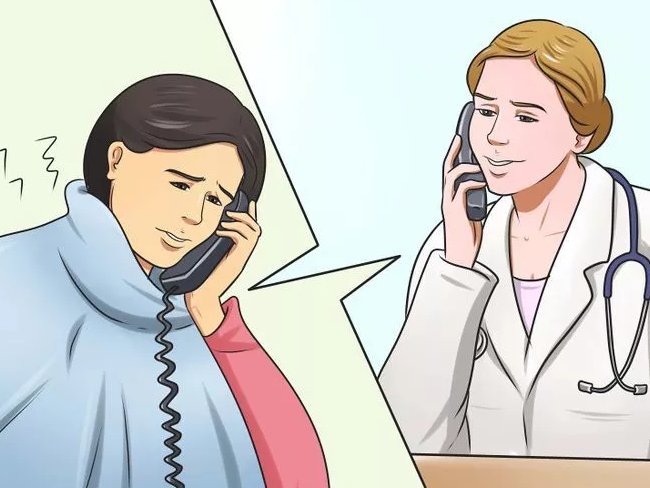
Whether or not you have symptoms of infection, you also need to let your doctor know that you have been at high risk of malaria. While people living in high-risk areas often wait to see if uncomplicated malaria develops or not, patients in low-risk areas should not do so. If you suspect malaria, you should call your doctor right away for testing and timely treatment.
7. Register for blood test
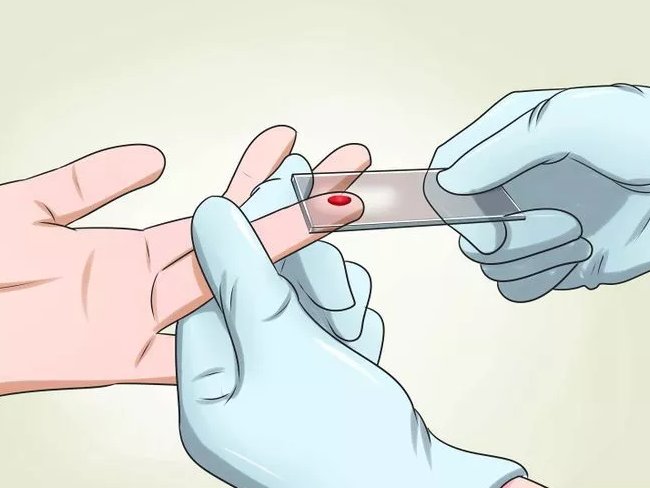
To check if your blood carries malaria parasites, your doctor will take a blood sample and analyze it in the laboratory. Even if the blood biopsy results for the first time show a negative result on the malaria parasite, the doctor will repeat the test every 8 to 12 hours within 36 hours.
- In addition, your doctor may order a quick blood test to determine if you are at risk for malaria.If the initial blood test shows a positive result, the doctor will order a blood smear to confirm the diagnosis.
- The doctor will also test your blood at the US Centers for Disease Control and Prevention CDC and check liver function with other organs.
Part 2: Treatment of malaria
1. Early diagnosis and treatment
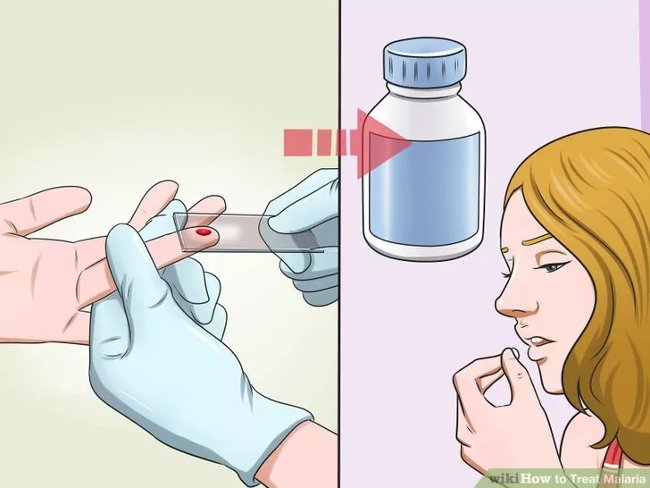
Although malaria can be dangerous and even fatal, malaria is also a treatable disease. However, there is currently no vaccine to prevent the disease, but it is proven to be very effective in treating and curing diseases if treated early. Successful treatment depends on whether you contact your healthcare professional as soon as possible.
2. Take prescription medication
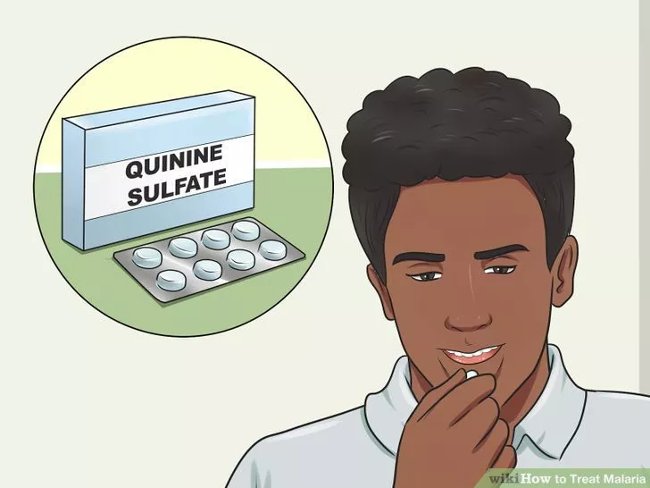
There are many types of antimalarial drugs that doctors can choose from. The doctor will prescribe medication based on the type of malaria parasite in the blood of the patient, age, whether the patient is pregnant and the severity of the symptoms. Most antimalarial drugs are oral, but patients who have complications may need to take intravenous medications. Like any living organism, the malaria parasite may be adapted to fight drugs, but the following drugs will have a high rate of successful treatment:
- Chloroquine (Aralen)
- Quinine sulfate (Qualaquin)
- Hydroxychloroquine (Plaquenil)
- Mefloquine
- Combination of Atovaquone and Proguanil (Malarone)
3. Rest during treatment
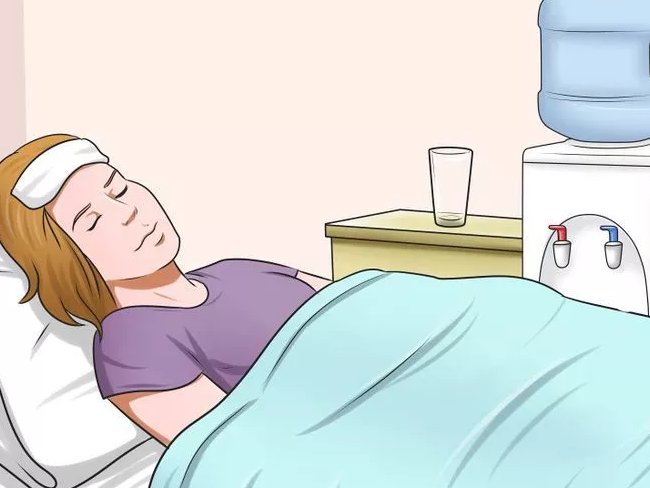
Ideally, what you can do during the recovery process is a lot of rest . Because antimalarial drugs cause different side effects. Because many drugs are used to treat malaria, not everyone has the same expression. However, common side effects include blurred vision, nausea, diarrhea, vomiting and abdominal pain or discomfort. Some medications may cause heartburn, insomnia, anxiety or mental depression, dizziness or problems in coordination of limbs.
- Pay attention to the body to identify side effects and inform your doctor immediately.Your doctor may prescribe medication to counteract that side effect.
- Drink plenty of water to prevent heartburn.
- Water is an especially important factor when a patient has vomiting or diarrhea.Your body will become dehydrated when you experience these side effects and you need extra water to keep your body healthy.
- Adhere to a light diet to treat abdominal pain.
- Rest, do not work too hard if you have difficulty coordinating the limbs.
- The doctor will monitor and detect signs of dehydration, anemia and seizures.In addition, observations will be made to identify complications affecting the internal organs of patients.
4. Wait for the fever to subside
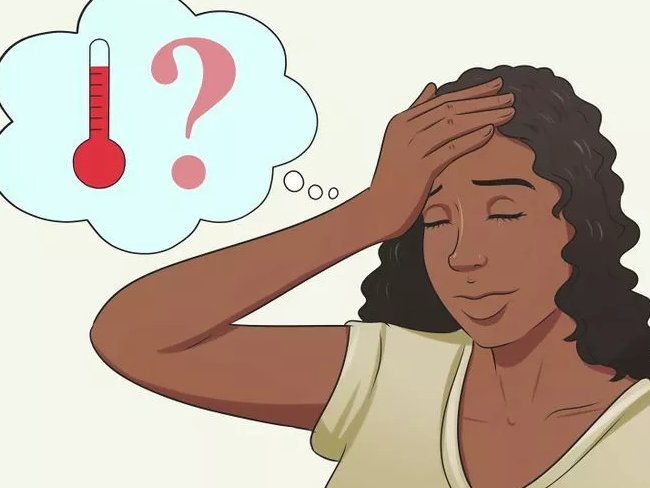
Antimalarial drugs are often very strong and effective. If the medication is effective and the patient has no complications, the fever will disappear within 36-48 hours. In most cases, malaria-causing bacteria will be completely eliminated from the body within 2-3 days and the patient will recover within 2 weeks.
- Your doctor will continue to perform a blood biopsy when you are being treated.If the treatment is successful, the amount of malaria-causing parasites in the blood will gradually decrease in each blood test.
5. Take Primaquine to prevent relapse
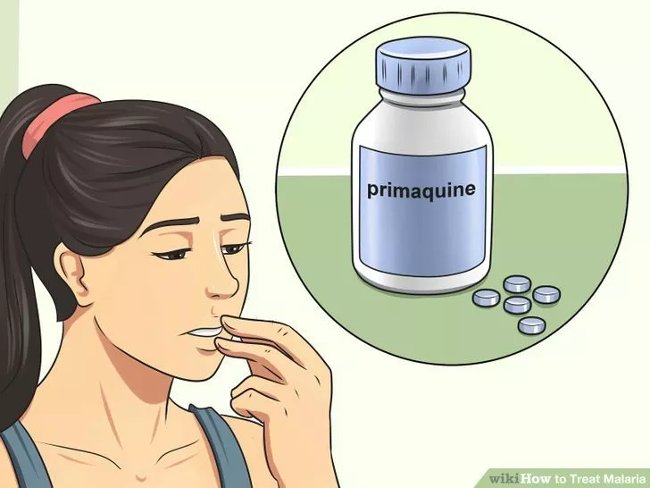
Although malaria may disappear initially, it can recur infrequently for several years. Although this usually happens without any prominent symptoms, you may have symptoms similar to colds when malaria recurs. Therefore, preventing recurrence is essential. Primaquine is an antimalarial drug that is usually taken after other drugs have killed the malaria parasite in the blood.
- Begin taking Primaquine after the fever disappears two weeks.
- The dose and time taken will be based on specific factors: the type of malaria you have and how your body responds to medication.Usually, the doctor will recommend taking the medication within 2 weeks.
- Follow your doctor's instructions exactly.Do not arbitrarily increase or decrease the dose, should take the medicine according to the prescribed time.
6. Avoid mosquito bites
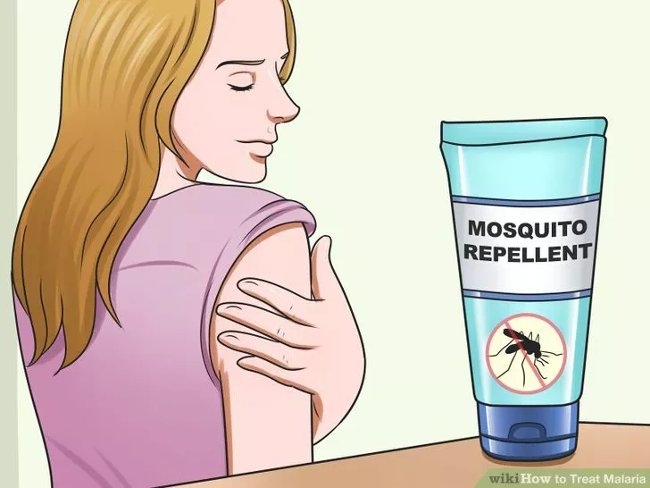
If you live in a low-risk area, you should not move to a high-risk area during the recovery process after malaria. To get more mosquito bites can lead to bad consequences. If you live in a high-risk area, try to protect yourself as much as possible.
- Wear long-sleeved clothing to cover the skin, even in hot weather.
- Always apply mosquito repellent.
- Choose mosquito repellent containing DEET, Picaridin, lemon eucalyptus essential oil (OLE) or PMD, or IR3535.Carefully read the information on the product label to make sure the mosquito repellent contains these effective ingredients.
- Burn mosquitoes to prevent mosquitoes from approaching.
- Should be in places with air conditioning to avoid mosquitoes.
- Blinds when sleeping in a place with lots of mosquitoes.
You should read it
- This is the most deadly disease in human history
- France successfully tested anti-malarial drugs combined with antibiotics to treat Covid-19
- 3 simple ways to effectively prevent dengue
- Antimalarial drugs can make cancer treatment effective
- Bill Gates' son only inherited $ 10 million
- An American man died when he took chloroquine because he thought it prevented corona virus
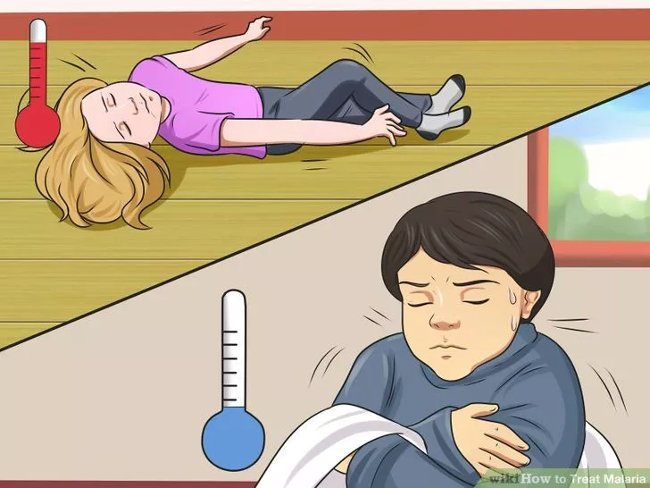
 12 exercises to have strong legs for all ages
12 exercises to have strong legs for all ages The dentist instructs how to brush teeth properly
The dentist instructs how to brush teeth properly Using whole grains helps to lower cardiovascular health than refined grains
Using whole grains helps to lower cardiovascular health than refined grains High cholesterol can make arthritis worse
High cholesterol can make arthritis worse Why not drink boiled water many times?
Why not drink boiled water many times? 15 great benefits of listening to music you may not know
15 great benefits of listening to music you may not know